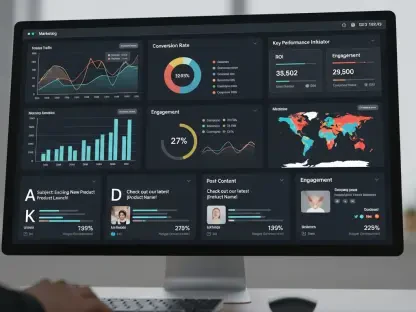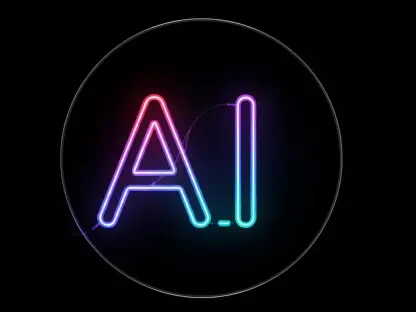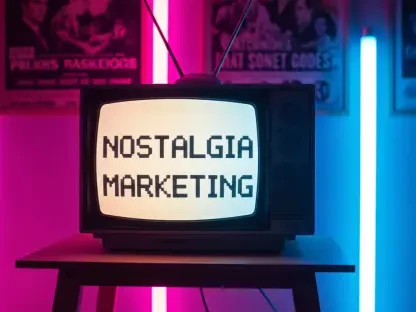In an era where digital marketing drives business growth, B2B lead generation technology stands at the forefront of transforming how companies connect with potential clients, with a staggering 67% of marketers prioritizing data compliance and accuracy according to a recent industry survey. Imagine a landscape where outdated third-party data sources crumble under regulatory scrutiny, and businesses scramble to build trust with privacy-conscious buyers. This challenge sets the stage for a deep dive into the innovative tools and strategies reshaping B2B marketing. The focus here is on how modern lead generation technology leverages first-party data, ethical AI, and human oversight to deliver high-intent leads while navigating a complex web of regulations and buyer expectations.
Introduction to B2B Lead Generation Technology
B2B lead generation technology has evolved dramatically, moving from rudimentary cold-calling and mass email campaigns to sophisticated, data-driven platforms that prioritize compliance and personalization. This shift responds directly to stringent privacy laws like GDPR and CCPA, which have forced businesses to rethink data collection and usage. Today, the emphasis lies in aligning with buyer demands for transparency while harnessing advanced tools to identify and nurture potential clients effectively.
The relevance of this technology in the current digital marketing landscape cannot be overstated. As trust becomes a cornerstone of business interactions, companies are compelled to adopt solutions that not only generate leads but also ensure ethical practices. This review aims to unpack the components and capabilities of these tools, shedding light on their transformative potential in a privacy-first world.
Core Components of Modern B2B Lead Gen Tech
First-Party Data Utilization
A pivotal element of contemporary B2B lead generation technology is the reliance on first-party data, collected directly from customer interactions such as website visits or content engagement. This approach ensures compliance with global privacy regulations, mitigating risks associated with outdated or non-compliant third-party sources. The precision of first-party data enhances targeting accuracy, fostering trust among prospects who value transparency in data usage.
Industry insights underscore the growing preference for this method, with a significant portion of marketers—around 84% according to recent surveys—depending on direct data for audience insights. This trend reflects a broader shift toward building sustainable, consent-based relationships with potential clients. The result is a more reliable foundation for marketing strategies that resonate with regulatory and ethical standards.
Beyond compliance, the performance benefits are clear. First-party data enables businesses to craft personalized campaigns that align with actual customer behaviors, leading to higher engagement rates. This data-centric focus is proving indispensable for maintaining a competitive edge in a crowded market.
Ethical AI Integration
Another cornerstone of modern lead generation technology is the integration of ethical AI, designed to predict buying intent and optimize lead scoring with fairness and transparency at its core. Unlike earlier models that risked perpetuating biases, today’s AI systems focus on behavioral patterns rather than identity-based profiling, ensuring responsible engagement. This approach enhances efficiency in identifying high-potential leads while respecting privacy boundaries.
Supporting tools like Customer Data Platforms (CDPs) amplify AI’s impact by unifying data across multiple touchpoints in real time. These platforms enable seamless personalization, allowing marketers to tailor content delivery to individual preferences without compromising compliance. The synergy between ethical AI and CDPs is redefining how businesses scale their outreach efforts.
The adoption of such technology also addresses consumer concerns about data misuse. By prioritizing transparency in AI algorithms, companies can build credibility with prospects who are increasingly wary of automated interactions. This balance of innovation and responsibility marks a significant leap forward in lead generation practices.
Human Verification Processes
While technology drives efficiency, human oversight remains a critical component in validating leads and ensuring trust in B2B lead generation. Human judgment complements AI by assessing nuanced engagement metrics and intent signals that algorithms might overlook. This hybrid model guarantees that leads are not only data-driven but also contextually relevant to business needs.
Processes involving human verification often include manual checks on contact accuracy and behavioral indicators like content interaction depth. Such meticulous evaluation results in higher-quality leads, with many businesses reporting improved conversion outcomes when human expertise guides final decisions. This method proves especially effective in complex B2B environments where relationships matter as much as data.
The combination of human insight with technological precision creates a robust framework for lead generation. It addresses the limitations of fully automated systems, ensuring that ethical considerations and personal rapport remain integral to the process. This balance is key to sustaining long-term trust with potential clients.
Recent Innovations and Industry Trends
The B2B lead generation sector is witnessing rapid advancements, propelled by regulatory changes that are phasing out third-party data reliance. Stricter privacy laws are pushing companies to innovate with first-party solutions, creating a ripple effect across marketing strategies. This transition is not just a necessity but a catalyst for more authentic customer interactions.
Ethical AI tools are also reaching new levels of maturity, becoming more accessible and scalable for businesses of varying sizes. Market data indicates that a substantial percentage of business leaders have already noted productivity gains from AI-driven automation, with adoption rates climbing steadily. These tools are reshaping how companies prioritize leads, focusing on quality over sheer volume.
Additionally, evolving buyer expectations are steering the industry toward personalized and transparent engagement. Modern B2B buyers demand interactions that feel genuine and tailored, prompting the development of strategies that emphasize trust-building over aggressive sales tactics. With market projections estimating the U.S. B2B marketing tech sector to grow significantly from 2025 to 2027, these trends signal a dynamic future for lead generation technology.
Real-World Applications and Case Studies
Across industries, B2B lead generation technology is being deployed with remarkable results, showcasing its versatility in meeting diverse marketing needs. A standout example is a company that has pioneered a balanced approach by exclusively using first-party data through opt-in interactions. This method ensures full compliance with privacy laws while delivering highly relevant leads to clients in sectors like technology and cybersecurity.
This innovative implementation involves a rigorous human verification process, where data experts manually validate leads by analyzing engagement metrics such as scroll rates and video watch times. The outcome is striking, with reported conversion rates to Marketing-Qualified Leads (MQLs) reaching up to 90% for some clients, alongside engagement rates surpassing industry benchmarks. Such success highlights the power of combining ethical data practices with human insight.
Unique use cases further demonstrate the adaptability of this technology, from tailoring campaigns for niche markets to supporting large-scale enterprise needs. These real-world applications reveal how businesses can achieve measurable results by aligning technological capabilities with modern buyer expectations. The ability to deliver high-intent leads consistently positions this technology as a game-changer in marketing efficiency.
Challenges and Limitations in Adoption
Despite its promise, B2B lead generation technology faces significant hurdles in widespread adoption, particularly in scaling AI without introducing biases. Developing algorithms that remain fair and effective across diverse datasets requires substantial investment and expertise, posing a barrier for smaller firms. This technical challenge underscores the need for ongoing innovation in AI design.
Regulatory compliance also presents a formidable obstacle, as businesses must navigate a complex landscape of global privacy laws that vary by region. Ensuring adherence while maintaining operational efficiency demands robust data governance frameworks, which can be resource-intensive to implement. This issue often slows the adoption of new tools among risk-averse organizations.
Market resistance to novel methods further complicates the picture, with some companies hesitant to abandon familiar third-party data practices despite their declining reliability. Overcoming this inertia requires demonstrating clear return-on-investment metrics and educating stakeholders on the benefits of modern approaches. Efforts to advance data anonymization and consent mechanisms are crucial steps toward addressing these adoption challenges.
Future Outlook for B2B Lead Generation Tech
Looking ahead, the trajectory of B2B lead generation technology points toward groundbreaking advancements in AI scalability and deeper integration of first-party data solutions. Enhanced algorithms are expected to handle larger, more complex datasets with greater accuracy, enabling businesses to refine their targeting strategies further. This evolution promises to streamline marketing efforts on an unprecedented scale.
The potential for tighter integration between data platforms and AI tools also looms large, offering seamless workflows that enhance real-time decision-making. Such developments could significantly boost marketing efficiency, allowing companies to respond swiftly to shifting buyer behaviors. The long-term impact on buyer relationships may redefine how trust is built in digital interactions.
As these innovations unfold, the competitive landscape of B2B marketing is likely to shift dramatically. Firms that invest in privacy-first, technology-driven solutions stand to gain a substantial edge over slower adopters. This forward-looking perspective suggests a future where lead generation becomes not just a tool, but a strategic cornerstone of business growth.
Conclusion and Overall Assessment
Reflecting on the exploration of B2B lead generation technology, it is evident that its strengths in leveraging first-party data, ethical AI, and human verification have already transformed marketing approaches across industries. The ability to deliver high-intent leads with precision and compliance stands out as a defining achievement, though challenges like AI bias and regulatory hurdles pose notable constraints. The technology’s potential for growth, however, remains undeniable, with early adopters showcasing impressive conversion metrics.
Moving forward, businesses are encouraged to prioritize investments in platforms that balance automation with human oversight, ensuring both efficiency and trust. Exploring partnerships with firms excelling in data governance could further mitigate compliance risks. As the market continues to evolve, staying ahead requires a commitment to testing emerging tools and adapting strategies to meet buyer demands, setting a clear path for sustained success in a data-driven era.









